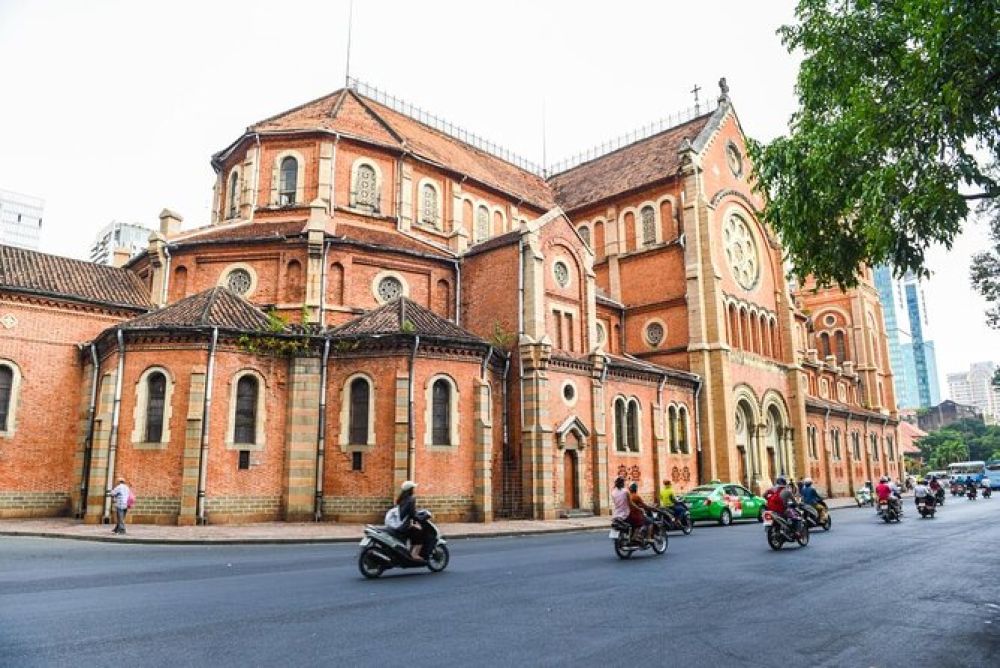

The Saigon Notre-Dame Basilica, officially known as the Cathedral Basilica of Our Lady of The Immaculate Conception, stands as an iconic landmark in the heart of Ho Chi Minh City. Constructed between 1863 and 1880 by French colonists, the cathedral is renowned for its neo-Romanesque style and two bell towers, which reach a height of 58 meters. Its presence is a reminder of the French influence on Vietnamese culture and architecture during the colonial era.
Not only is the Basilica an important religious site for the Catholic community in Vietnam, but it also has become a symbol of the city, attracting tourists from all over the world. In October 2005, it was officially recognized by the Vatican as a basilica, further elevating its status as a site of historical and spiritual significance.
Ho Chi Minh City, formerly known as Saigon, has a rich tourism history that has evolved alongside Vietnam's own development. The city has long been a cultural and economical hub in Southeast Asia. Following the end of the Vietnam War and the reunification of North and South Vietnam in 1975, the city saw a period of rebuilding and economic hardship.
Tourism in Ho Chi Minh City truly began to flourish in the 1990s, as Vietnam opened up to international tourism and economic investments. The city's dynamic atmosphere, coupled with its historical sites, such as the War Remnants Museum, the Reunification Palace, and the Saigon Notre-Dame Basilica, started drawing in a large number of tourists.
In recent years, Ho Chi Minh City's tourism sector has embraced the global trend towards sustainably and experientially oriented travel. Tourists are now looking beyond traditional sightseeing, seeking to immerse themselves in local culture, cuisine, and everyday life. The trend includes community-based tourism, where visitors interact more closely with local communities, and eco-tourism, which encourages responsible travel to natural areas, aiming to conserve the environment and improve the well-being of local people.
Another rising trend is the focus on wellness tourism, with an increase in health-focused retreats and activities within the city and its surroundings. Travelers are increasingly drawn to the combination of cultural exploration and personal well-being.
When visiting the Saigon Notre-Dame Basilica, tourists can admire its magnificent architectural details, serene ambiance, and the famous statue of the Virgin Mary that was rumored to have shed tears in 2005, drawing thousands to witness the miraculous event. Masses are held in both Vietnamese and English, appealing to both locals and foreigners. As a prominent historical landmark, the basilica provides insight into the city's colonial past and religious heritage.
Please note: Renovations and restoration work on the cathedral began in 2017 and are expected to continue for some time. Visitors should check in advance to see if the basilica is accessible during their visit to Ho Chi Minh City.